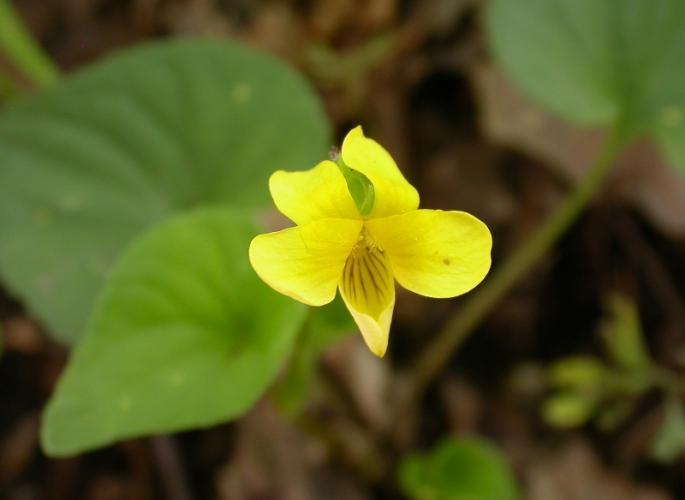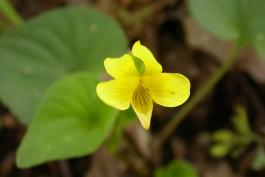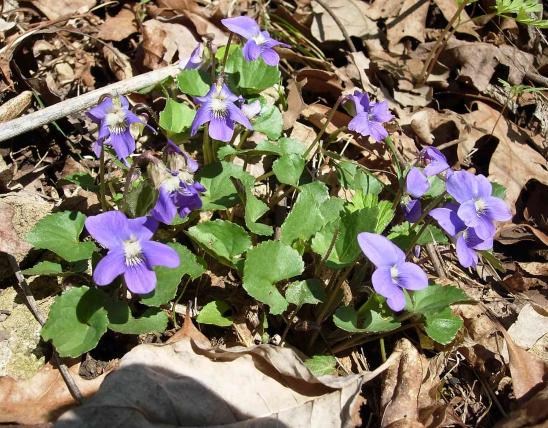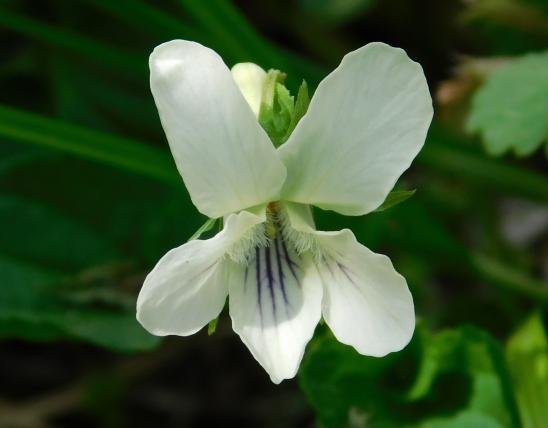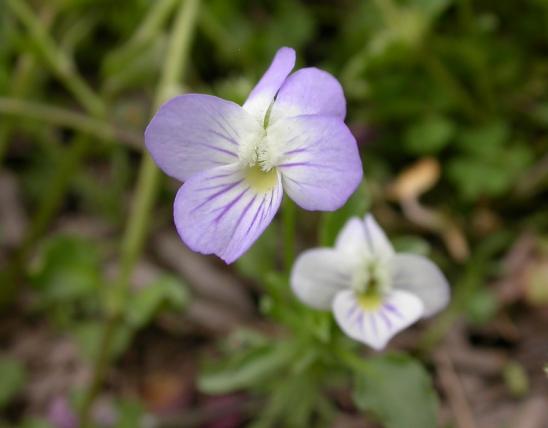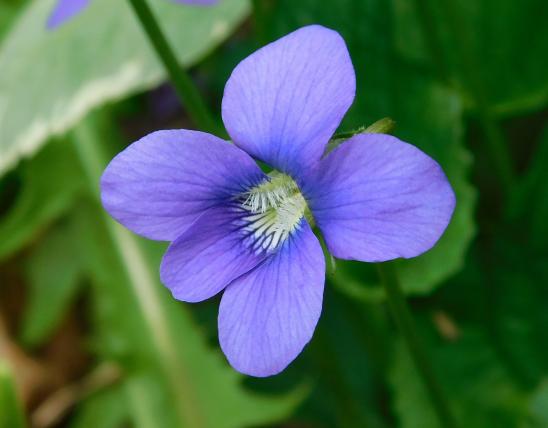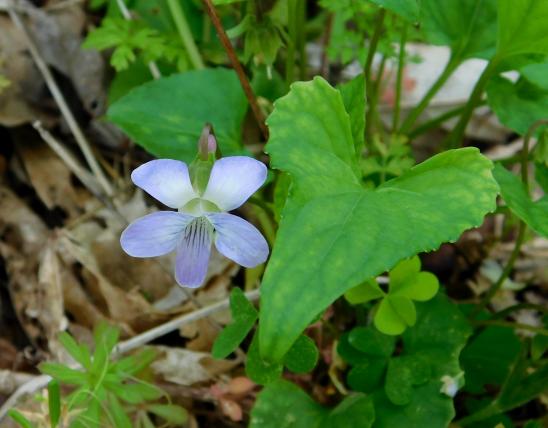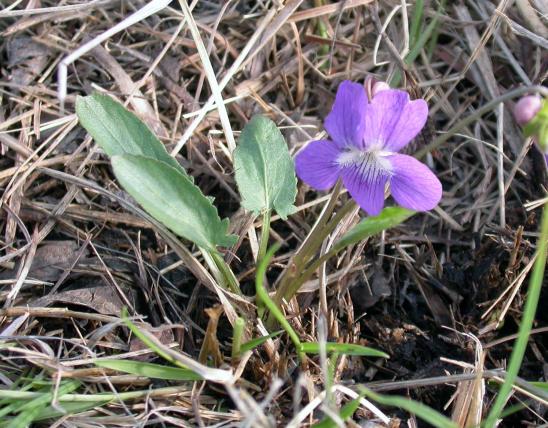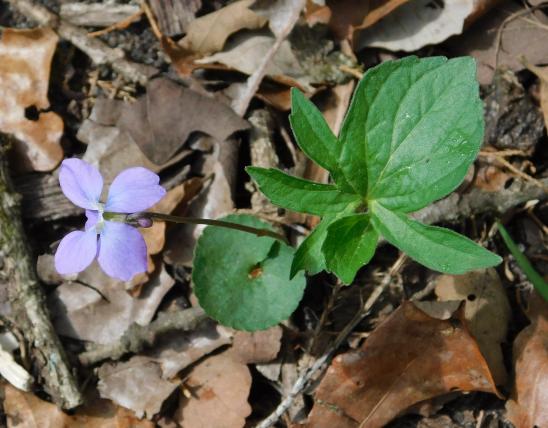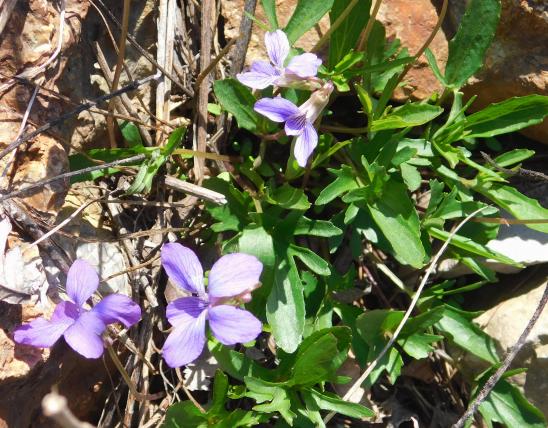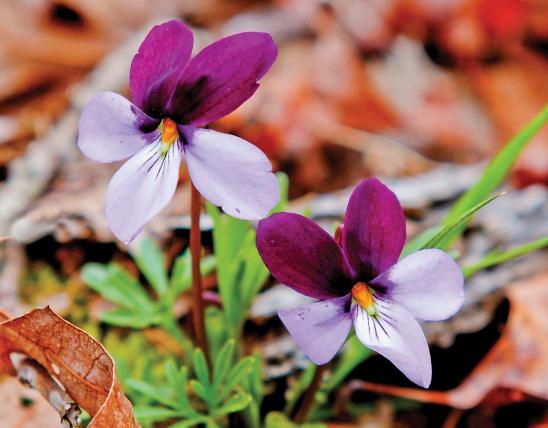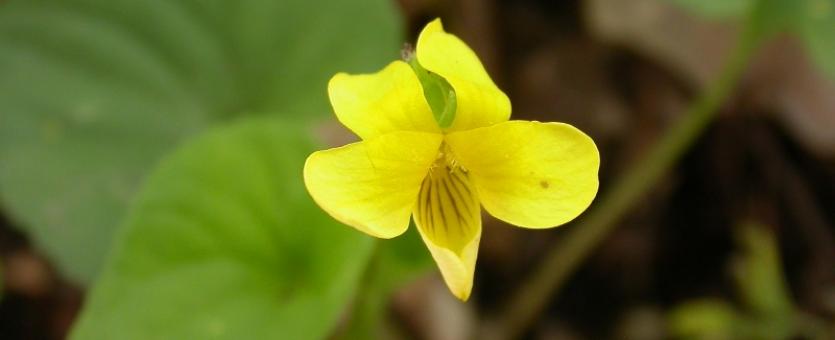
Yellow violet is unmistakable. It's Missouri's only all-yellow violet. The flower stems arise from axils of upper stem leaves, and not from the base of the plant. The lower 3 petals have purple veining. The species begins flowering on low, small plants and keeps on flowering for a long period, sometimes growing to nearly 2 feet tall. Blooms March–May. Both the basal and stem leaves are heart-shaped with fine scalloping.
This is one of 17 species of violets (genus Viola) in Missouri. To learn more about Missouri's violets as a group, visit their group page.
Height: begins flowering low to the ground; often grows to 1 foot during its long blooming time.
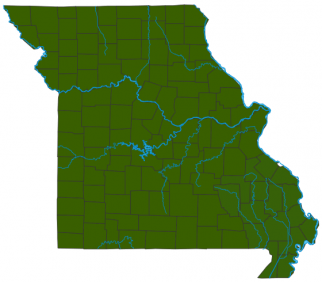
Statewide.
Habitat and Conservation
Occurs in low woods, rich slopes, and wooded floodplains.
Status
Native Missouri perennial wildflower.
Human Connections
The showy flowers and attractiveness to butterflies make yellow violet a good native plant for rock gardens, fronts of borders, woodland gardens, and other situations. Please do not dig plants from the wild; instead, obtain them from an ethical wildflower nursery.
Ecosystem Connections
A number of bees, butterflies, skippers, and flies are attracted to the nectar of yellow violets, and fritillary butterflies use violets as the food plant for their caterpillars. Some birds, including juncos and certain gamebirds, eat the seeds.
